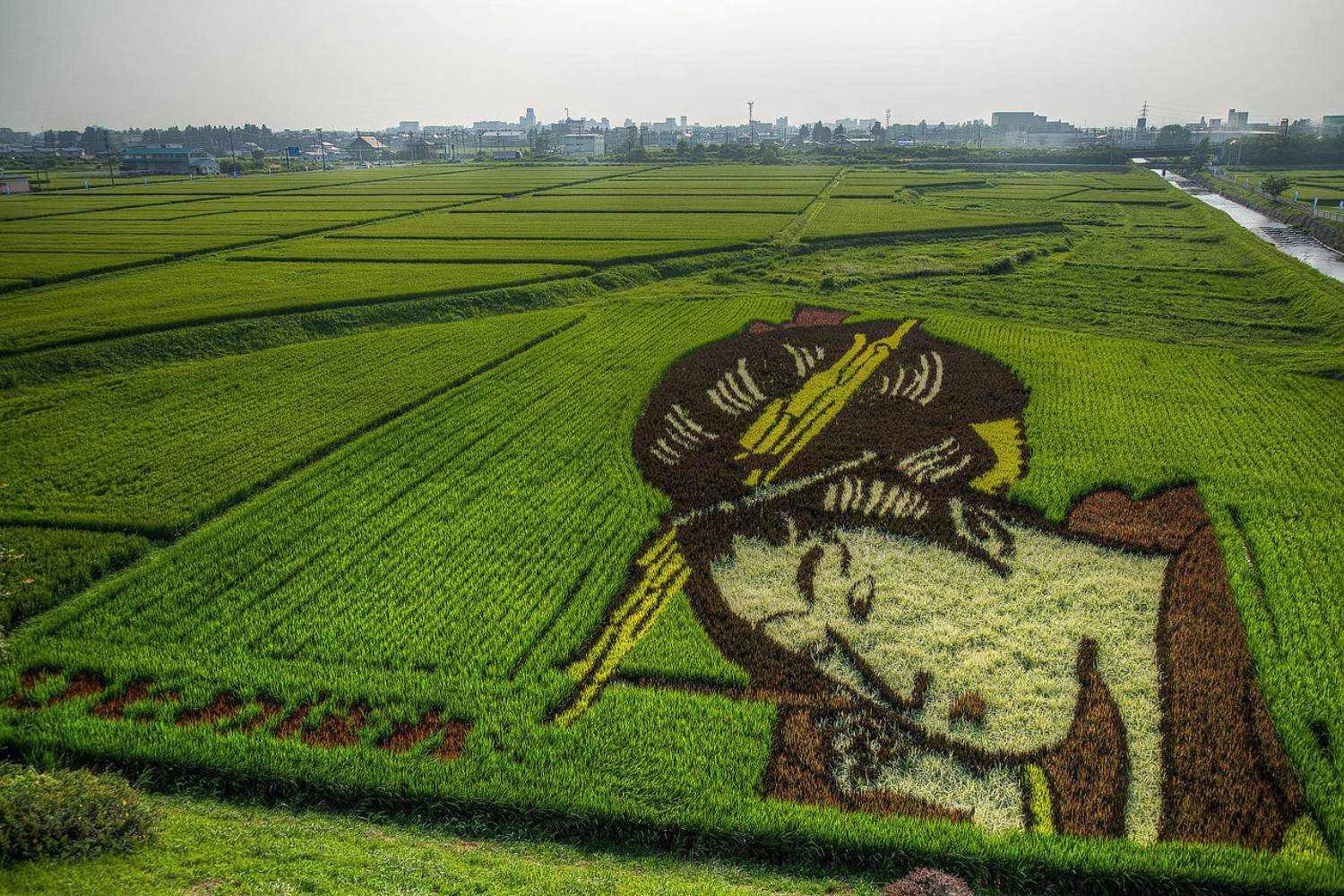Rice Paddy Tambo Art is a Japanese tradition that transforms rice fields into spectacular living canvases with designs and colors that change over time

In Japan, rice fields become living canvases through Rice Paddy Tambo Art, also known as Tanbo Art. This unique practice combines agriculture and creativity, using different rice varieties to achieve natural colors like green, yellow, and purple.
During planting season, young seedlings are planted according to precise patterns: as they grow, complex designs emerge visible only from elevated viewpoints. The result is an ever-evolving work of art that changes with light and wind. This tradition allows visitors to admire an artistic landscape that transforms day by day, offering an unforgettable visual experience.
Among the most famous locations is Azumino, in Nagano, where rice paddies cover approximately 9,000 square meters (96,875 square feet) and a dedicated observation platform 6 meters (20 feet) high allows viewing the entire picture from above. Here visitors can follow every stage of creation through photographic exhibitions illustrating the planting and harvesting process.
There are panoramic viewpoints to admire the artworks
Each year, several Japanese villages host events dedicated to Tanbo Art. In Inakadate, Aomori, rice fields become the stage for spectacular works, such as the representation of Girl with a Pearl Earring by Vermeer or images inspired by One Piece.
Observatories like the Inakadate Village Observatory and the Yayoi no Sato Observatory offer panoramic points from which to admire the creations, with affordable tickets for adults and children. The event runs from May to October, offering multiple opportunities to witness the growth of the designs and their transformation with the seasons.
This art form is not only visually spectacular: it reflects the perfection and patience required to cultivate rice and celebrates the fusion between agricultural tradition and artistic creativity. Visitors can also discover local culture, savoring typical products and rice-related souvenirs, fully immersing themselves in Japanese rural beauty. Rice Paddy Tambo Art demonstrates that art is not limited to museums or galleries: it can be born from fields, from the hands of farmer-artists and the movement of plants in the wind, transforming nature itself into living masterpieces.
